Ken's on-screen presence captivates audiences, bringing depth and authenticity to his characters.
Behind the camera, Ken's ingenuity and ability to improvise a solution to a difficult shot not only can save money and time but enhance the credibility of the set and the film.
He understands the need to be creative but pragmatic from practical effects involving real animals to cheated angles and more realist CGI FX. (He developed a concept for an Indianapolis commercial with ZERO live animals and one tenth the budget).
Ken's versatility as both actor and filmmaker adds a unique perspective to each production.
He brings a blend of passion, talent, and professionalism to every role and project.
Ken's contributions on and off camera contribute to the success and impact of films.
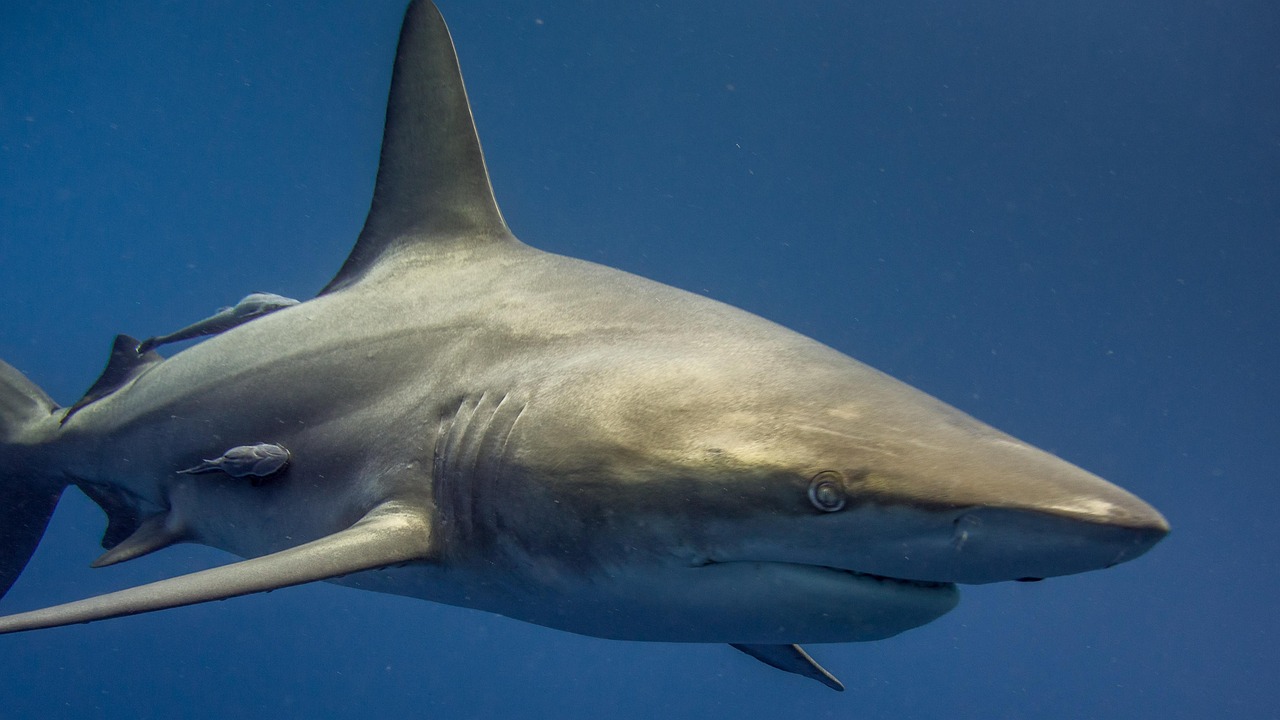
Ken's on-screen presence captivates audiences, bringing depth and authenticity to his characters.
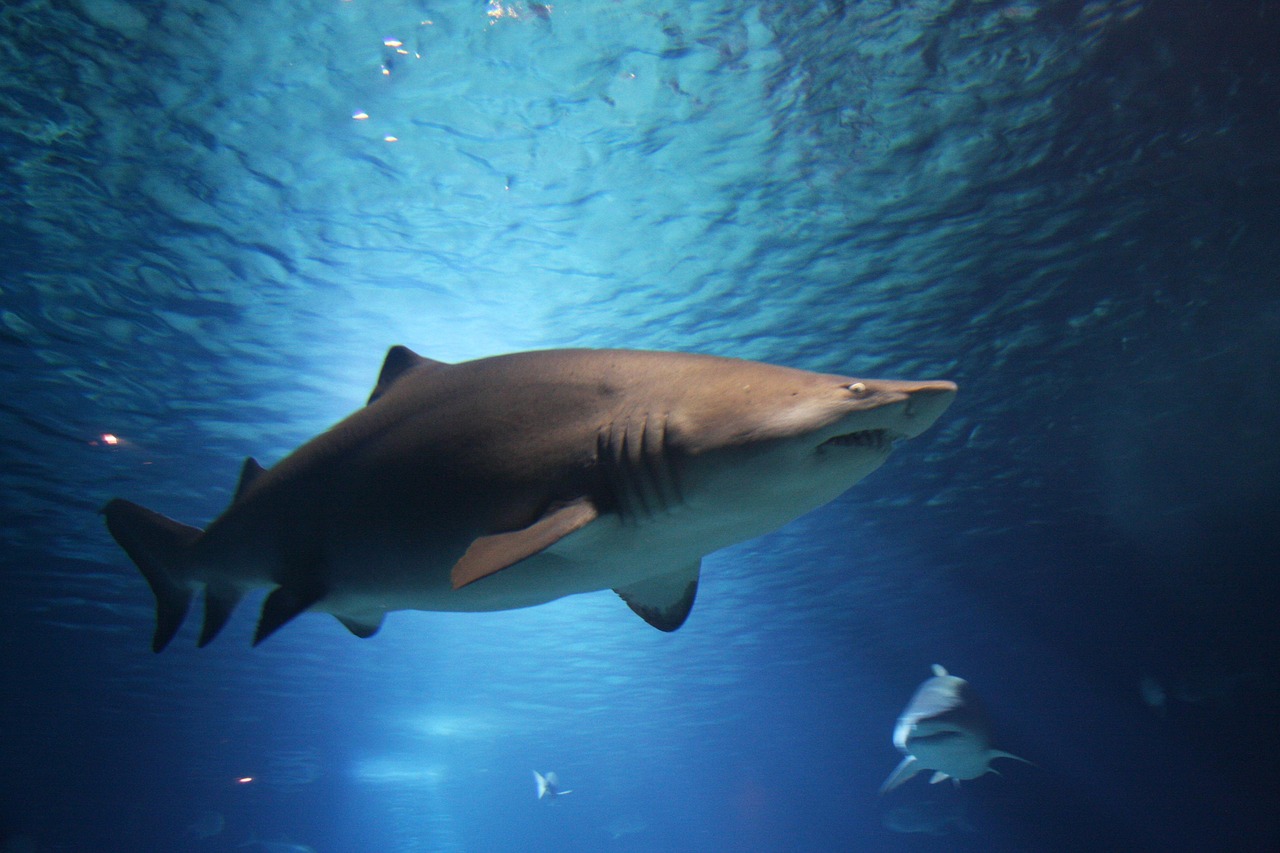
Behind the camera, Ken's vision and creativity shine, enhancing the overall film experience.
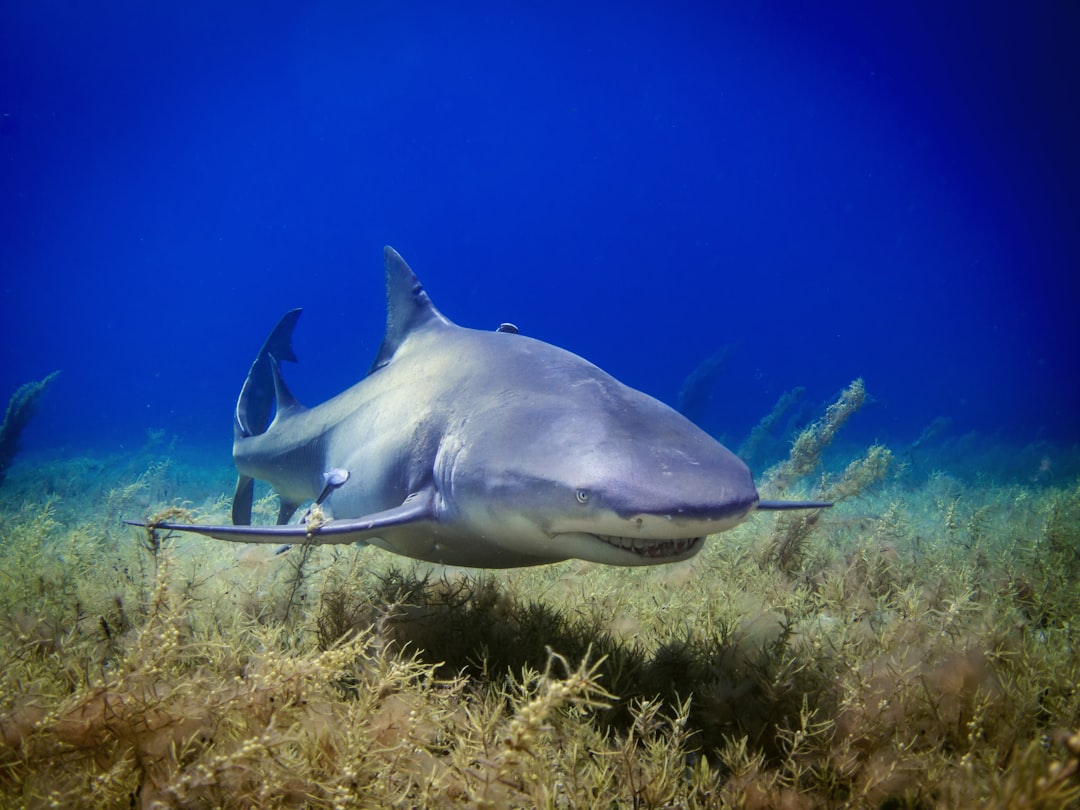
His dedication to his craft is evident in every project, elevating the storytelling process.
Ken's experience with animals and humans on set and in the wild lets him understand the limitations of both on camera and on set.
"Bio props", as we have heard ADs call us and animals, react to on set and on camera in different ways. Bringing actors face to face with apex predators or even harmless snakes can be daunting and high stress. Knowing the behavior of both along with the need to get the shot, get it on time and under budget, gives Ken quite a unique perspective. In crew or production meetings, Ken isn't an ego, he is a problem solver and a TEAM player. He works with ALL departments to aid them adapt to a live animal or fake animal scene from props to wardrobe to principal talent with a team mindset. His goal is to bring the director's vision to reality without breaking the producer's bank while making the shot look as real as possible. He knows the need to "get it in the can" with as little pain and drama as possible.
Ken brings many different fields to bear on his work in the film industry. His experience in emergency services as well as field research gives him many advantages that benefit a production. Ken has the abilities to take charge instantly and protect his crew as well as sit back and follow the director's instructions. He understands the need to get the job done whether it means camera time or staying out of the shot. He has trained many team players. Ken is also cool under fire. He is careful and does not preach safety first, he lives it. This does not stop him from pushing the envelop to get an exciting shot. His work in feature films includes combat and basic stunts. He loves action and knows how to shake things up.
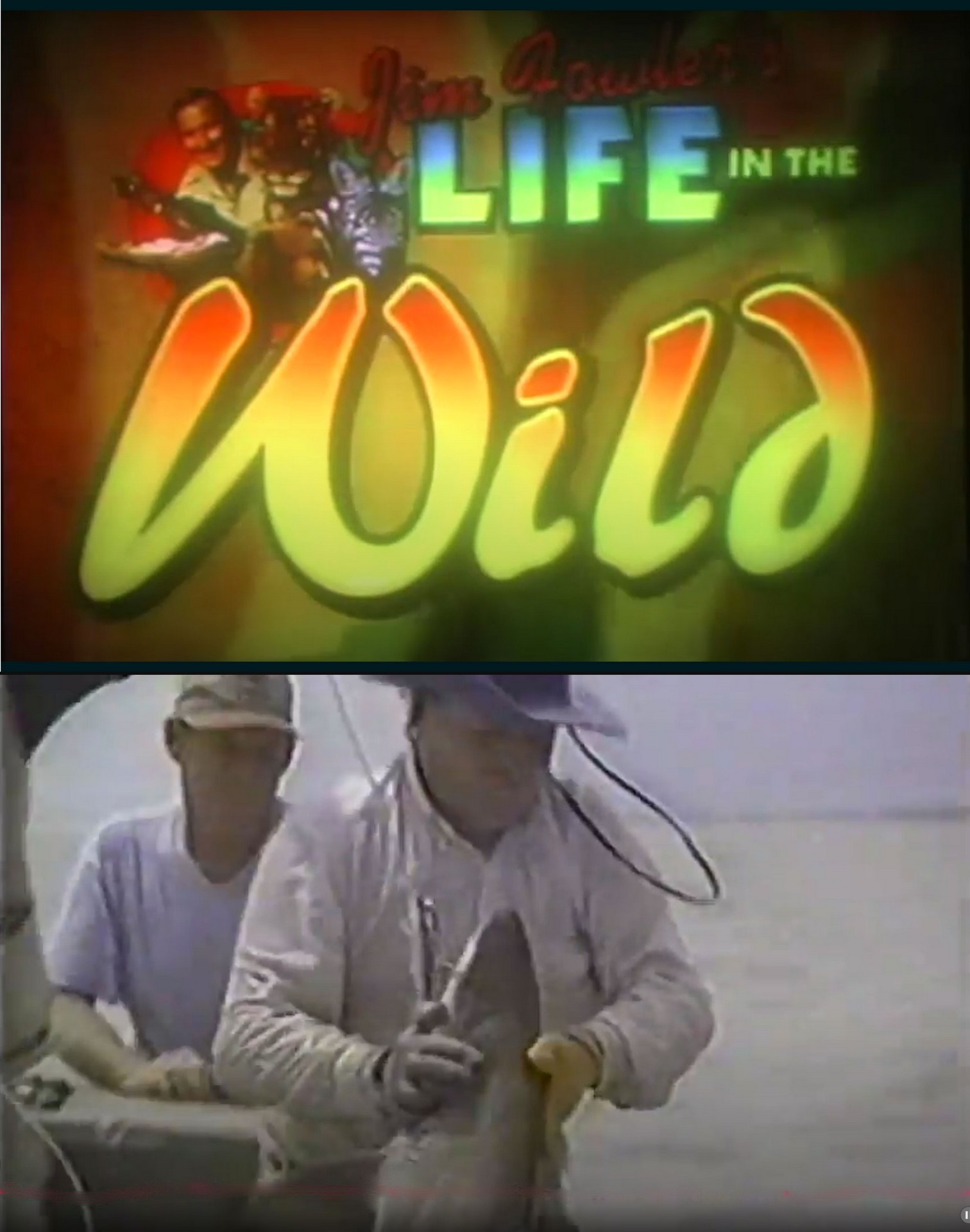
When wrangling sharks, he has exhibited a sixth sense about them. He often knows how far he can push a shark without a problem. He also knows what not to do in order to protect his crew from an attack. While Ken does not advocate "indiscrete" handling of sharks on camera (because he feels the public should not feel safe handling wild animals), he has no fear of animals. His direct handling of some of the most dangerous species has tempered his edge. He works hands on with sharks over ten feet in length. Ken's "hand release" technique used in releasing sharks after surgical tagging is unheard of in the industry. The only available footage of this technique is in "Jim Fowler's Life in the Wild". (You can see clips of this technique shown with a couple small sharks upon request.) Ken understands that footage, even documentary footage, must (in his words) "grab the audience and shake them like the jaws of a great white shaking seal carcass". He knows they must feel the excitement and feel glad that they can see something scary in the safety of their arm chair.
(Click the image to the left for a popup window with that footage)
Ken's experience with animals and humans on set and in the wild lets him understand limitations both on camera and on set.
Given his "hands on" approach to working with large sharks out of the water, more than one renowned shark researcher trusts Ken's hands to protect them. Ken has not had a crew member in his charge receive a bite or serious injury.
He knows what is possible and still attempts the impossible to get the shot that you want. Ken has a feel for the camera, but, not a magnetic attraction to the lens. He functions as well in front of the camera as he does behind it. Ken's eager to please attitude makes him loved by production crews.
He also has the discipline of "get it right the first time". He likes to get it in one take whenever possible and whenever absolutely imperative. You may never get a second shot at something incredible.
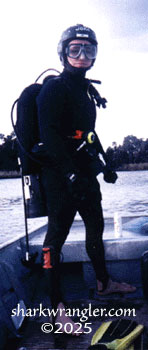
Ken's experience and training in boats and water rescue come in handy when a producer needs experienced veteran divers. Unlike many "safety divers" on set, Ken has done emergency and non-emergent body recoveries, complete water rescue and has been "proven under fire". In one mission he performed a recovery of a drowning victim at 2AM in a dirty river with zero visibility in water that was 45 degrees F with just a wet suit.
He is qualified to train rescue squads in diving for boat races and other dangerous water activities as well as in drowning victim recovery and resuscitation. This goes back to the finely honed edge his experiences have forged. He has a hard edge with a warm smile. Ken is light-hearted in spite of what he has seen in the field. He loves to make people laugh. As a medic in the field he learned that levity preserves sanity.
His SCUBA and boating abilities allow him to adapt to any location. He can handle the insects of the everglades and does not whine too much in the cold. He can supply snakes and other wild animals for shoots and has yet to find out how unusual or rare an animal he can find that he cannot handle. He has great energy balanced by a level head.
Ken's experience with collecting, handling and transporting the most delicate marine species in the animal trade sets him apart from anyone else when you need a wrangler.
MOST OF ALL, Ken is a REAL Shark Wrangler. By this we mean, he handles sharks, transports sharks, keeps them alive in aquariums and releases them LIVE back to the wild. He is not just a diver conducting shark dives. He can transport them ALIVE AND INTACT to a film studio shooting tank and maintain them during a shot not just catch them or dive around them.
Though he works hands on with the sharks, he always says, "Don't feed a shark by hand, unless you have one too many hands." He learns from all new experiences on top of his current knowledge that carries him through the most unique shark wrangling situations. Some of the leading researchers for NOAA stake their fingers and their safety on Ken's ability to wrangle by hand seven foot plus animals on a boat deck.
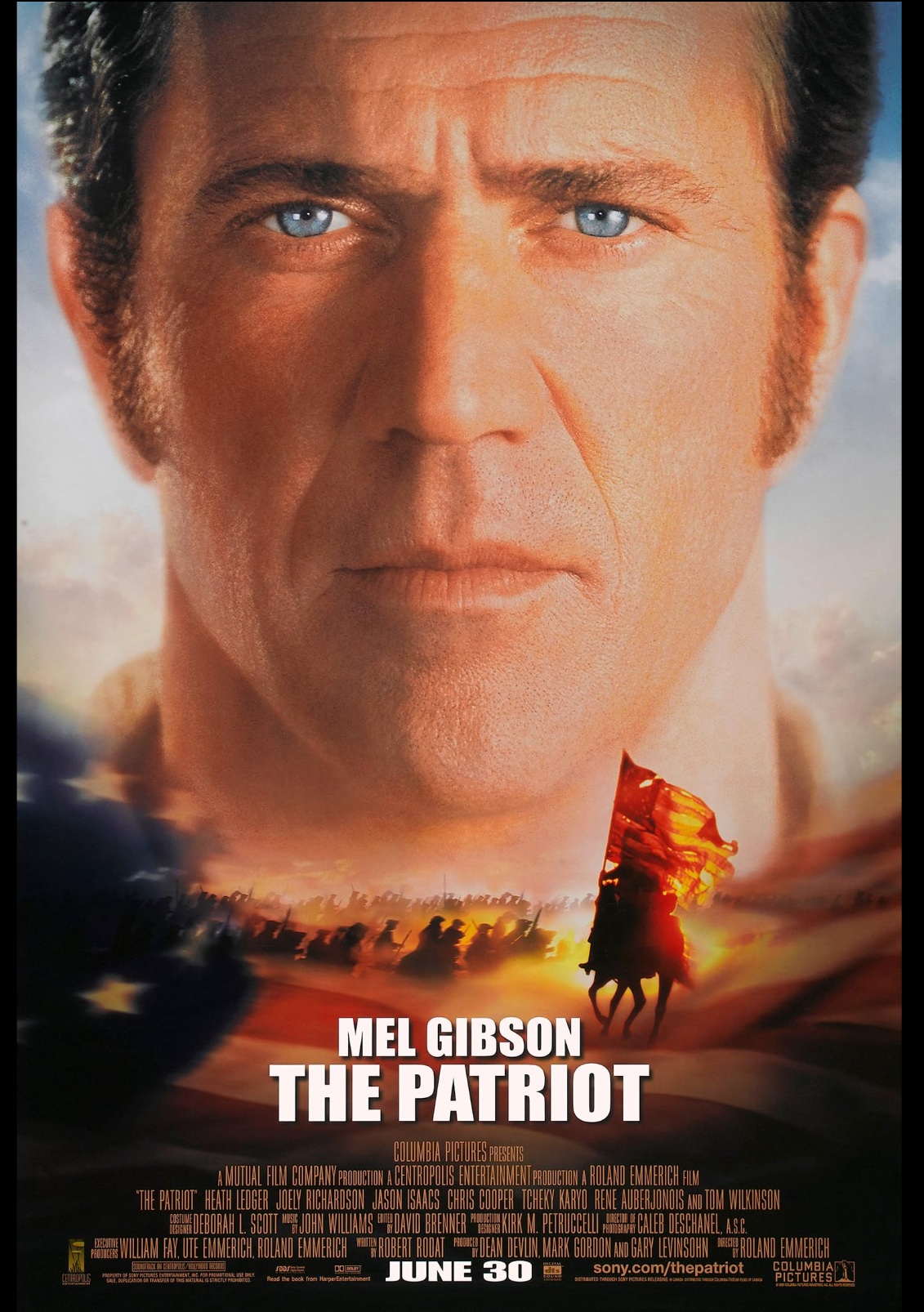
Ken's first job in film was as a core soldier in The Patriot.
In that role, Ken did the day to day soldiering as a soldier in both armies from marching to battle scenes. He appeared in every battle except the surrender at Yorktown.
Not only did he do the basic soldiering, he was trained to do the basic stunt fighting spending hundreds of hours and takes on the field. This included marching over bomb pots with explosions in his face to being nearly trampled by horses at least a dozen times.
This experience taught him how to function in a fully funded professional production with complete departmentalization. He saw the intricacies of department function and coordination in the completion of a multimillion dollar production.
He also witnessed the mastery of Roland Emmerich's integration of film stock and digital cameras. He learned about blocking and staging CGI shots and sets firsthand. He also learned the way that production costs work.
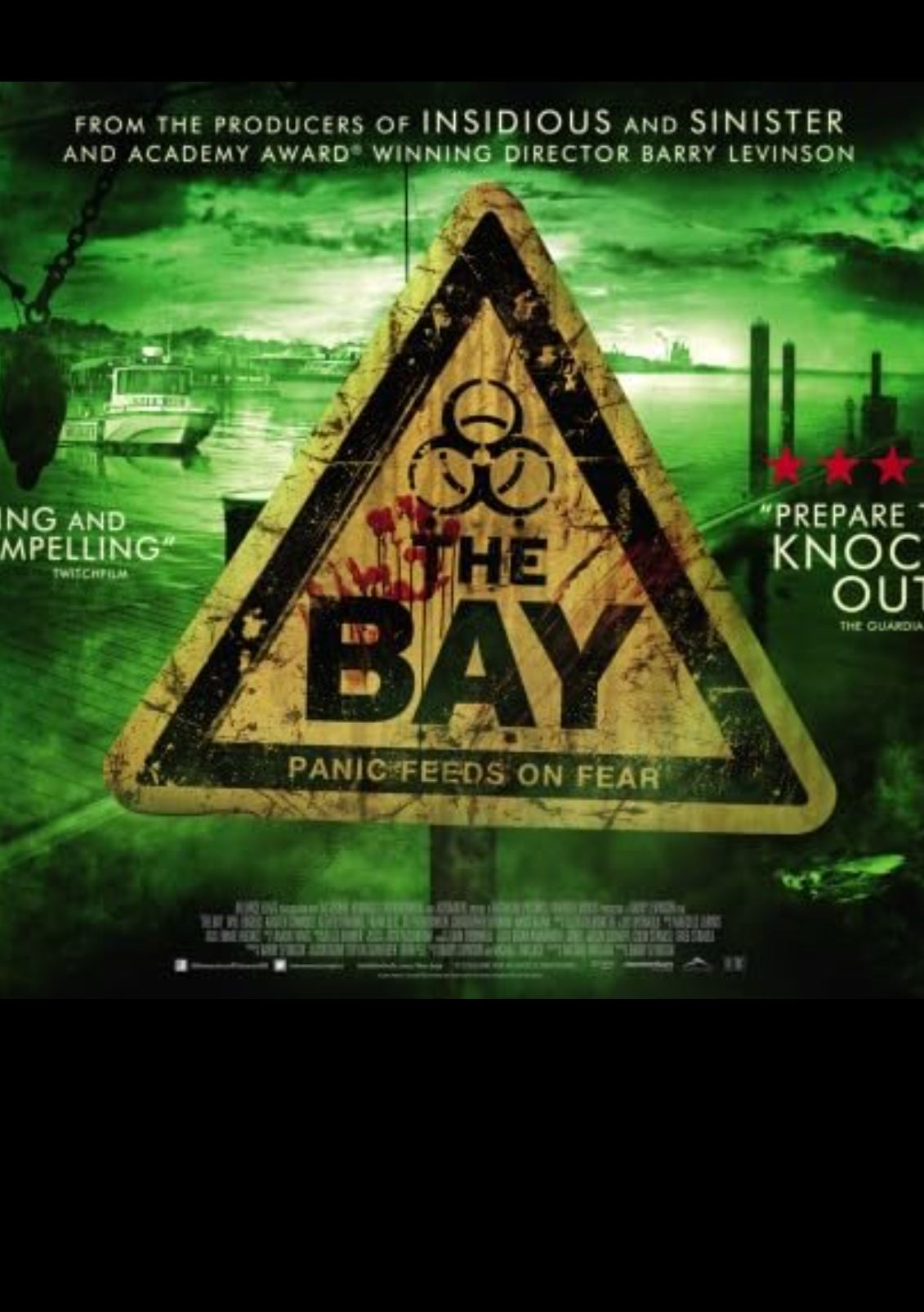
Behind the camera, Ken served as animal wrangler but also provided real life props (including the only REAL LIVE Isopods on the set of the project working titled, Isopods), animal safety and talent safety in wild locations.
He supplied live sea bass for shooting in a pond set to simulate the Bay scenes.
He designed and coordinated scenes with animals he trained for an attack scene. He is credited as "Chicken Feeder" as well as animal wrangler in this production.

In his first documentary, Ken showed off his skills as a shark biologist assisting in placing surgical tags in Blacktip Sharks off South Carolina (his home territory). He was in between shoots on the television set of The Fugitive driving back home from the Savannah location shoot.
The video of this appearance is on the videos page. You can see some of his skills. He was handling sharks up to 7 feet long whose jaws were only inches from his face during their manual releases (largest beasts not included in final cut). And he did the final satellite tag placements for Dr. Jose Castro (world famous shark reproductive biologist and personal friend) showing Dr. Castro a new chemical suturing technique that reduced stress on the sharks and sped up the surgical procedure dramatically.
Dr. Castro trusted Ken's judgment in which sharks were most viable for tagging as each tag costed more than $1200 each. It made no sense to tag a shark that had been on the line too long and might not survive. Dr. Castro and Dr. Heuter trusted Ken's wrangling skills to prevent them from being bitten or the sharks from being harmed.
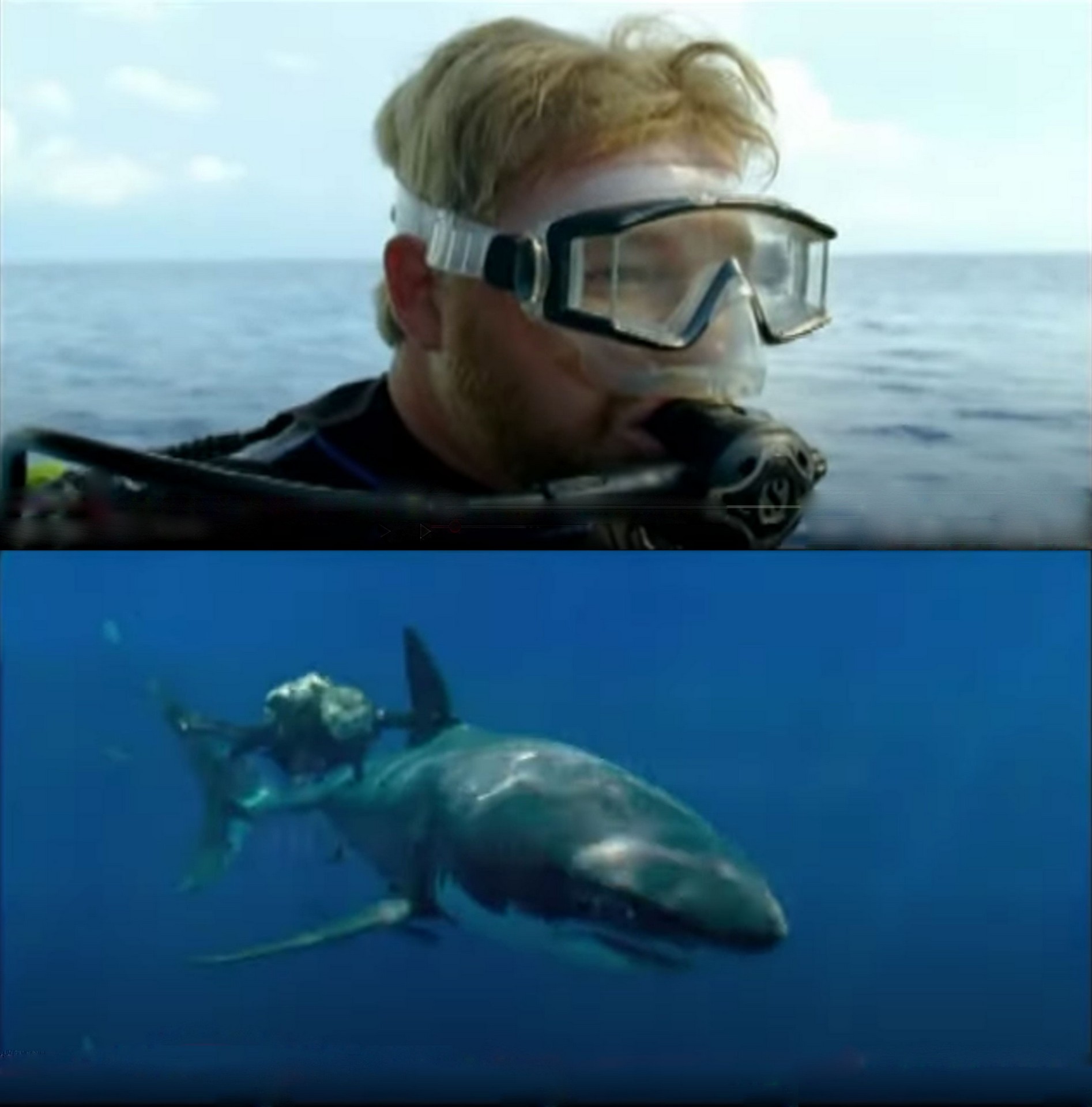
Ken's first principal talent commercial was for the US Cellular "But it takes 6 Weeks" Campaign. He was called in during the concept development phase of the shark spot. He helped the producers hone the spot into a tight but exciting spot while helping them with a plan to get it in the can at a good budget given the necessary CGI to use the desired stock footage (because one scene was not safe enough for an actor). Ken originally suggested a female actress that he worked with to be principal talent. However, when they introduced "swimming with the sharks" as a real stunt not a CGI one, Ken was moved to principal to mitigate risk of injury.
Ken fabricated cages for the original location in the Florida Keys. Prepared crew from his own shark crew and worked with the editors to pick and prep the necessary stock footage for integration into the live actor shoots. He designed and built safety devices that could even function unseen on camera to protect divers from fatal injuries by shark bite.
While his cheaper shoot to be filmed on location in the Keys was scrapped for a Bahamian shoot at Stuart's Cove, Ken still supplied props and wardrobe. Worked with the new marine coordinator and performed all the shark stunts without complaint or any injury to man or beast. He was involved from concept to completed filming demonstrating his value in being brought in early in the development phase of a project. (Click image to the left for popup window of completed commercial)
Ken isn't the best thing since ice cream, but, he knows his field being a pioneer of the trade. Take advantage of the Shark Wrangler's skills. Book him for your next project.
